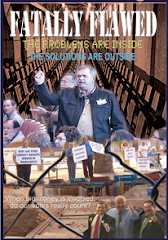By Josh Israel, Aaron Mehta
Center for Public Integrity
July 22, 2009
Whether the subject is health care reform, climate change, or pay-as-you-go budgeting rules, almost everyone, it seems, suddenly wants to talk with the Blue Dogs. President Obama’s White House meeting with members of the fiscally conservative Democratic coalition earlier this week is but the latest indication that the Blue Dogs — 52 members strong — have deftly turned themselves into a key voting bloc at the nexus of power. With them, the Democrats do not need a single Republican to back their legislation; without them, the Democratic agenda would be in serious peril. And as their clout has expanded, fundraising has grown accordingly, not just from traditionally Democratic contributors, but from unexpected quarters as well.
 So far this year, the Blue Dog Political Action Committee is on track to shatter all its fundraising records; in fact, the total for the first six months of 2009 — more than $1.1 million — is greater than what was raised in the entire 2003-04 fundraising cycle.
So far this year, the Blue Dog Political Action Committee is on track to shatter all its fundraising records; in fact, the total for the first six months of 2009 — more than $1.1 million — is greater than what was raised in the entire 2003-04 fundraising cycle. Furthermore, according to analysis by the Center for Public Integrity of CQ MoneyLine data, the energy, financial services, and health care industries have accounted for nearly 54 percent of the Blue Dog PAC’s 2009 receipts (up from 45 percent in 2004).These contributions poured in as President Obama and the Democratic Congress have been making a major push to reform health care, develop a new energy policy, and restructure oversight of the banking sector. Clearly, these Dogs are having their day.
FROM SMALL PAC TO TOP DOGS
Their beginnings were humble. The Blue Dog Coalition was formed in 1995 following elections the previous fall that cost Democrats control of Congress. One of the co-founders, then-Alabama Representative Glen Browder, says the original members — 23 in all — “were unhappy with the direction of our own party and felt we needed to chart our own course.” Drawing from a combination of a famous series of paintings of blue-colored dogs by George Rodrigue and the notion that they were “yellow dog democrats” who had been “choked blue” by the liberals who dominated the party, they became “The Blue Dogs.”
Over time they evolved into what former Texas Representative Nick Lampson calls “a close-knit group.” Today, they hold weekly meetings with no staffers and focus on voting as a bloc. One issue above all others unifies them: a commitment to fiscal discipline. For instance, the group has successfully pushed for President Obama to endorse a pay-as-you-go requirement for Congressional budgeting; a PAYGO bill passed the House on Wednesday. The group’s website describes the coalition as “a policy-oriented group [formed] to give moderate and conservative Democrats in the House of Representatives a common sense, bridge-building voice within the institution,” and notes their relentless pursuit of a balanced budget.
As the coalition grew, it quickly sought to raise money to protect and expand its ranks, forming a political action committee in August 1995 just for Blue Dogs.
THE POWER OF THE PAC
As individuals, the 52 Blue Dogs have received the plurality of their 2009 campaign contributions from a traditional Democratic ally: organized labor. Labor political action committees have filled the Blue Dog Coalition members’ campaign committee coffers with more than a million dollars so far this cycle.

Click for larger view
But it’s the Blue Dog PAC that is most illuminating for spotting trends. The Blue Dog PAC raises money mostly from other PACs and automatically disburses the maximum possible contribution to each of its members for their re-election campaigns. This helps preserve their ranks, especially since many of them represent swing districts and are among the most targeted incumbents at election time.
There is much more! For the rest of the story, click here.
















